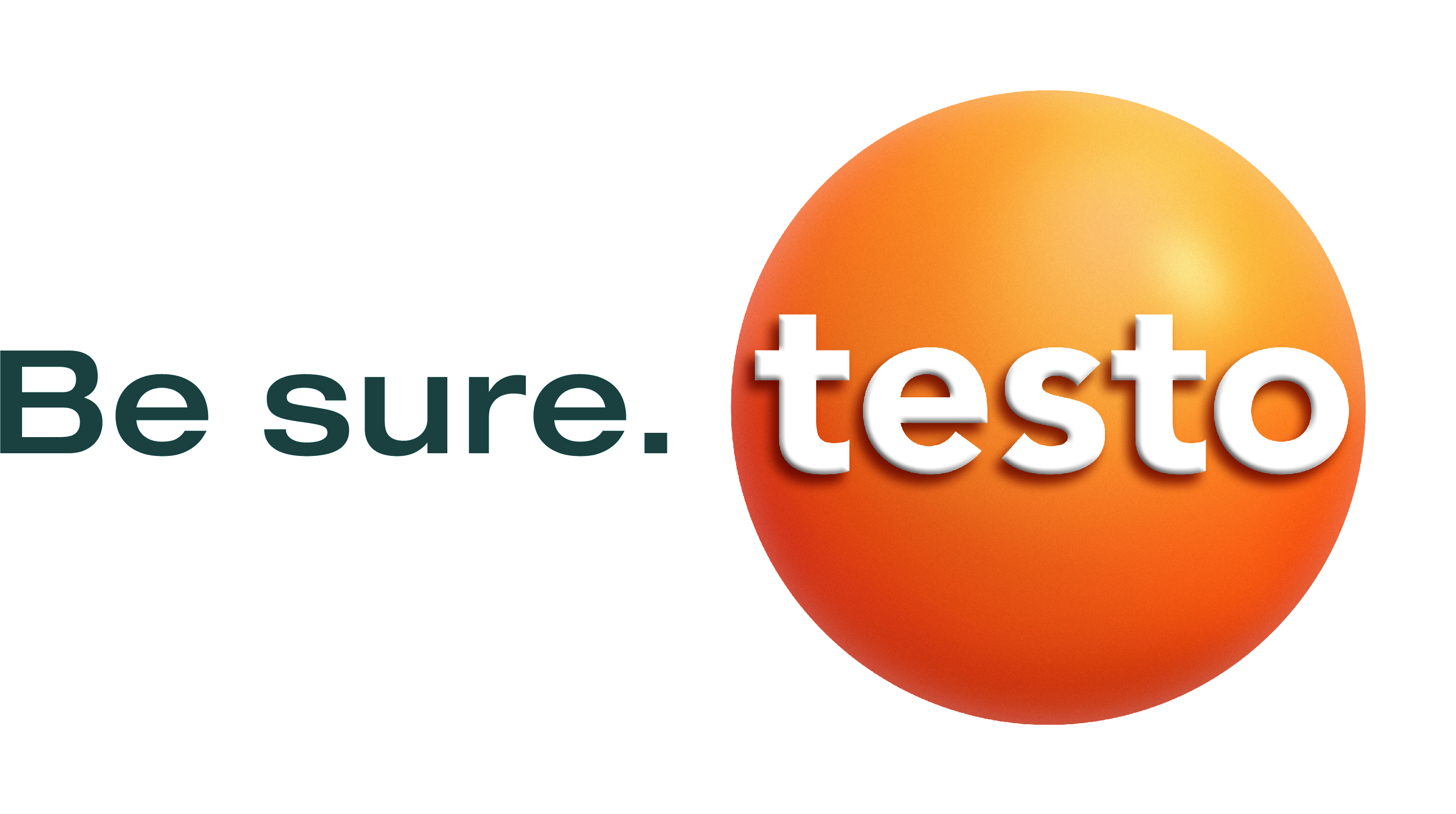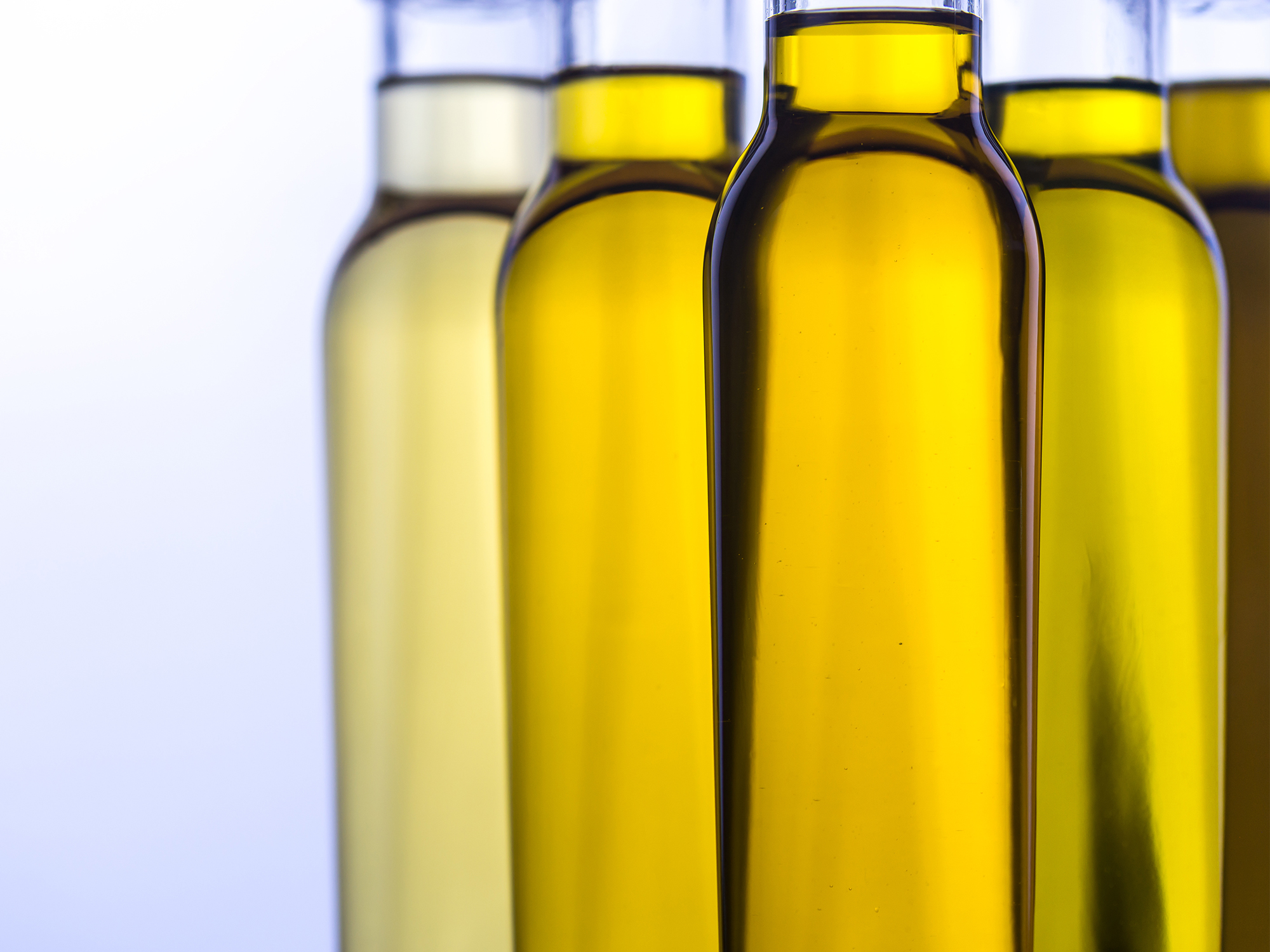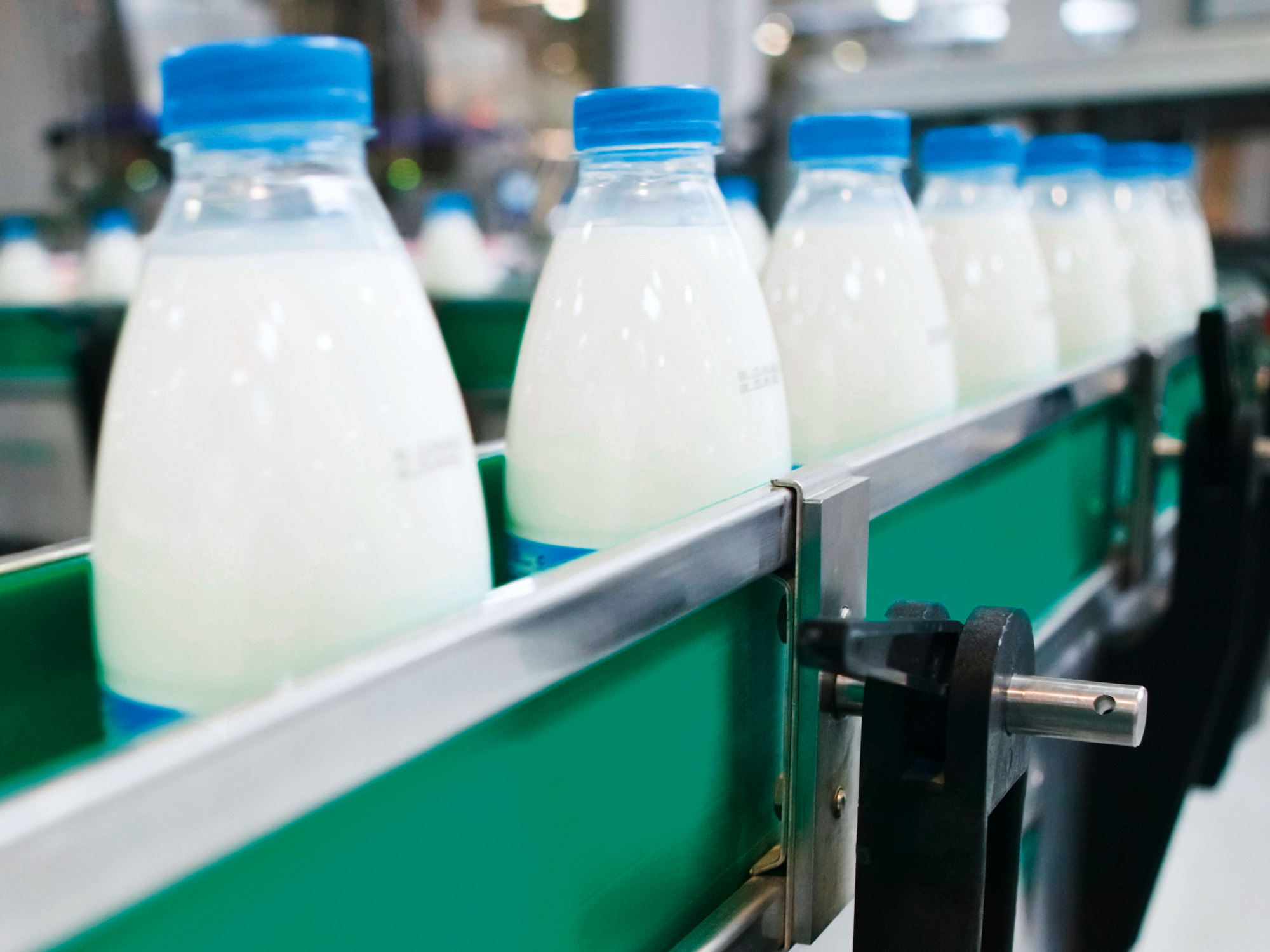Rising prices, fragile supply chains, unsettled customers: The food industry is facing its biggest challenges in years. Testo supports with precise measurement technology and expertise to secure the cold chain and thus ensure food safety.
|
With uncertain supplies, inflation-driven price increases and a nervous mood among consumers, the food industry has a special responsibility with regard to food safety. After all, hardly anything would unsettle consumers more in such a tense situation than a food scandal. Public opinion would be clear: As soon as prices rise, savings are made at the expense of safety. Therefore, responsible stakeholders along the entire food cold chain are now particularly challenged to ensure the safety of the food in their responsibility with the appropriate measurement technology.
|
 |
In the following write-up, we will look at the background and show how measurement technology helps to reduce spoilage, cut costs and ensure food safety in storage, logistics and retail.
Global influencing factors:
Lockdown, war and supply chain disruptions drive up prices
For months, countless container ships have been jammed off the world's largest port. The lockdown imposed in Shanghai in March 2022 means that over 260,000 containers could not be loaded for export. These include goods that are needed in the global food industry, such as parts for machines, raw materials or packaging. The result is rising prices, faltering production and ultimately empty shelves in domestic supermarkets.
Russia's attack on Ukraine poses another significant problem for global food supplies. After all, Ukraine is one of the world's top food exporters of sunflower oil, mustard, and grain. This conflict is particularly noticeable in the edible oils sector - where prices have risen dramatically. The longer the war lasts, the greater the risk that prices will continue to rise. In the short term, the resulting supply shortfalls can perhaps be compensated for from stocks. In the medium and long term, however, this is not readily possible.
These foods are particularly affected by the price increase:
(A special situation in Germany: In connection with the war, Germany again experienced a typical phenomenon in supermarkets that exacerbated the already tight supply situation due to inflation: Hoarding. Because the shortages that were and are still visible on the flour and oil shelves can be attributed primarily to consumers' irrational purchasing behaviour. However, while supplies of sunflower oil are indeed running low, fears of flour shortages are unfounded, according to the German Association of Grain, Milling and Starch Industries.)
Certainty from the very beginning:
Food safety in Incoming Goods
The moment when goods are transferred from one actor in the cold chain to another is critical to food safety. The challenge: There is often a lack of time to measure the temperature of each product. For one thing, this takes too long, and for another, it is also uneconomical: Because the most accurate measurement is always a core temperature measurement, i.e. a penetration probe measures the temperature in the interior of the refrigerated goods. The packaging is damaged in the process. In order to avoid this, a three-stage process has been established in practice:
| 1. First scan the surface with an infrared measuring instrument. If the temperature is clearly within the “green range”, the test is finished. For example: The yoghurt pots have a temperature of 5 °C (target: max. 8 °C). |
2. Is the temperature of some yoghurt pots over 8 °C? Then measure with contact probe between two yoghurt pots. |
3. Is the temperature still too high? Then carry out a penetration measurement on one or more pots. The probe is inserted through the lid into the food and thus measures the correct core temperature. |
 |
 |
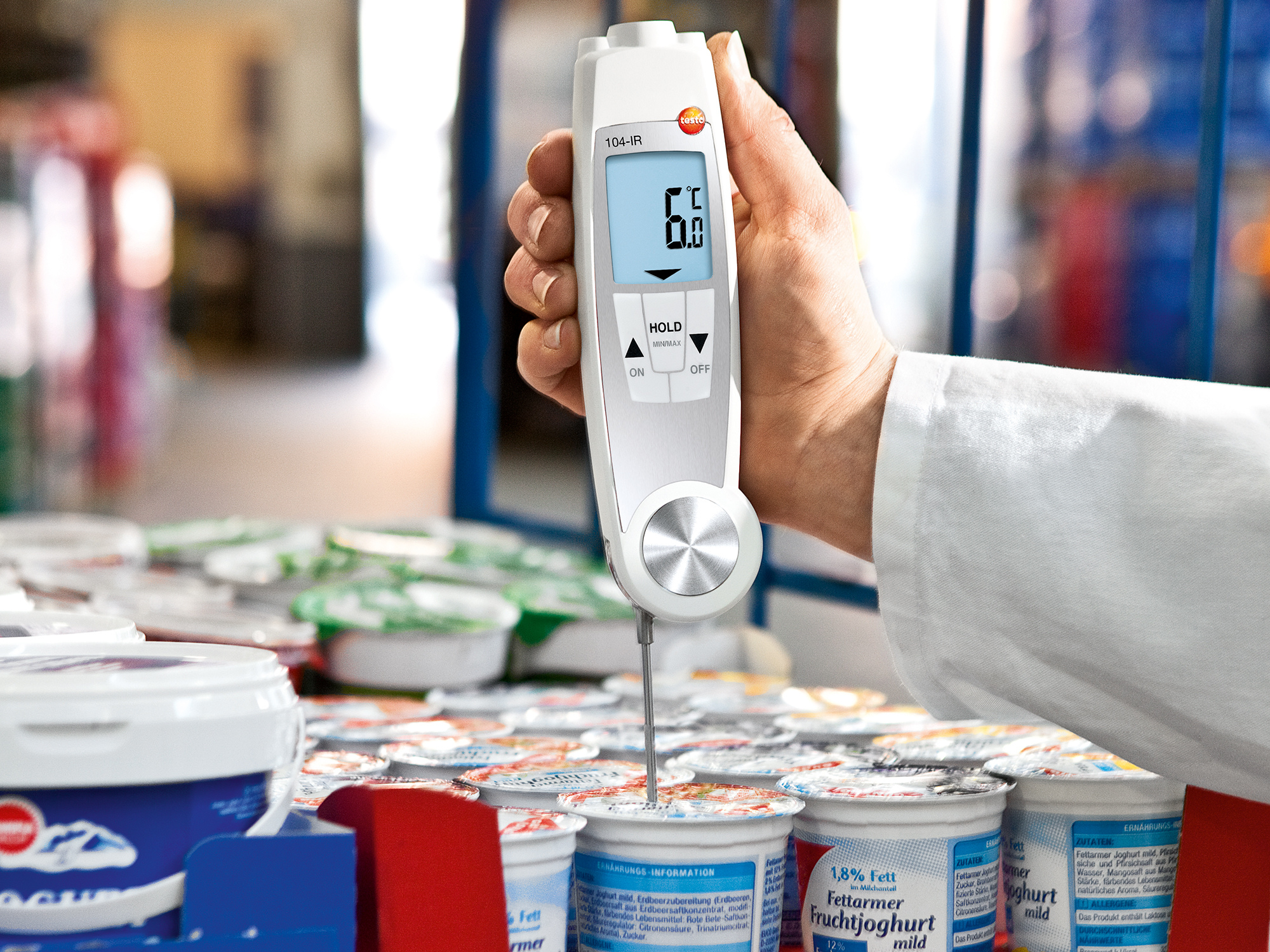 |
Measurement technology recommendations for Incoming Goods
|
For spot checks:
Infrared thermometer
testo 831
|
For core temperatures:
Penetration thermometer
testo 104
|
Flexible:
Combined infrared and penetration thermometer
testo 104-IR
|
- Non-contact, non-intrusive temperature measurement thanks to infrared technology
- Precise temperature measurement even at a greater distance and for small products
- Extremely fast: With two measurements a second you can scan complete pallets almost in passing
|
- Ideal for food: HACCP-compliant, certified to EN 13485
- Can be washed under running water in accordance with protection class IP65
- Practical folding mechanism with robust metal folding joint, easy to handle, ready for immediate use
|
- Surface and and core temperature measurement
- Infrared measuring instrument with laser marking and penetration probe
- Robust and practical: sturdy folding hinge, waterproof housing (IP 65), fits in any jacket pocket
|
|
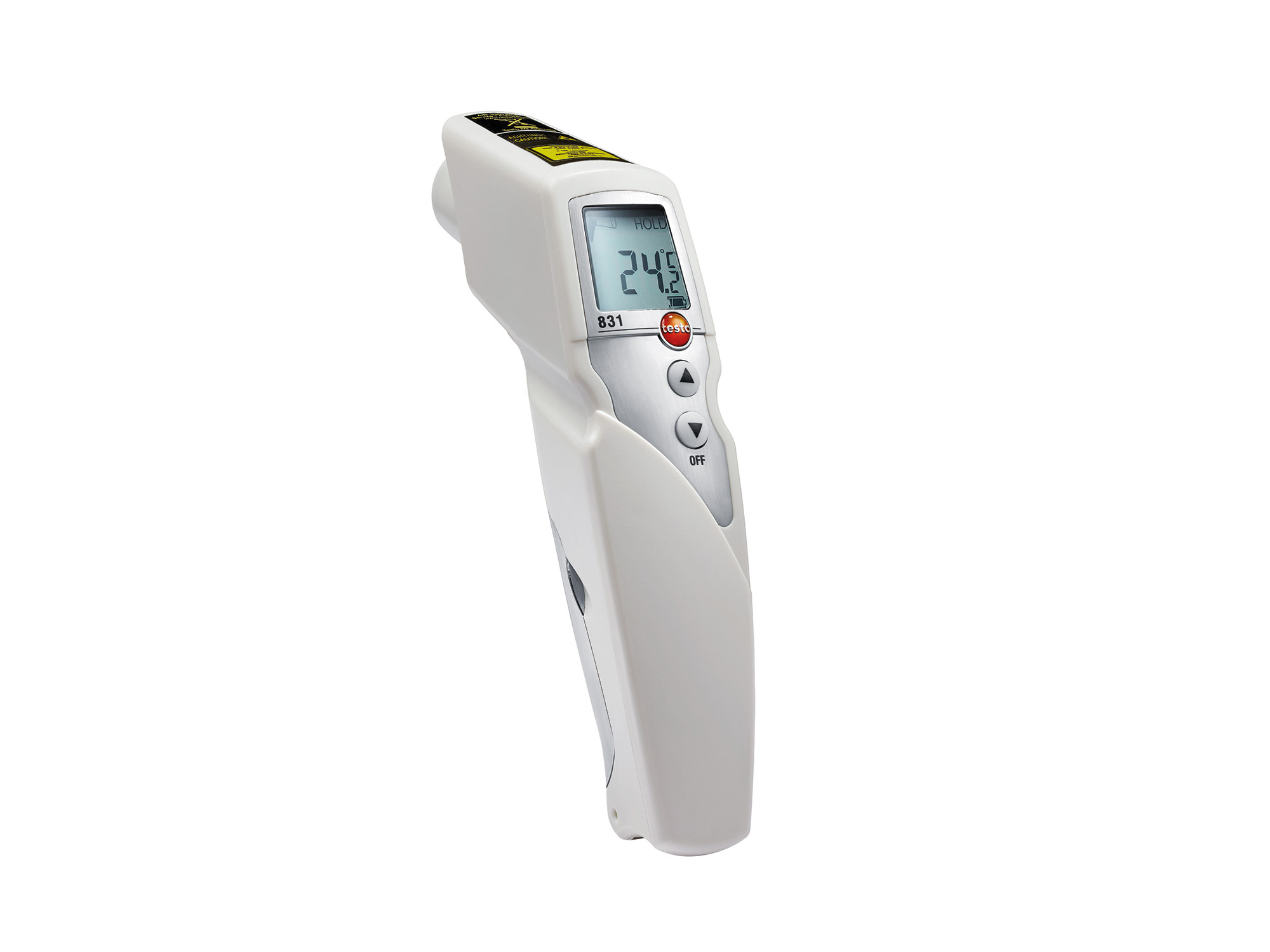
|

|
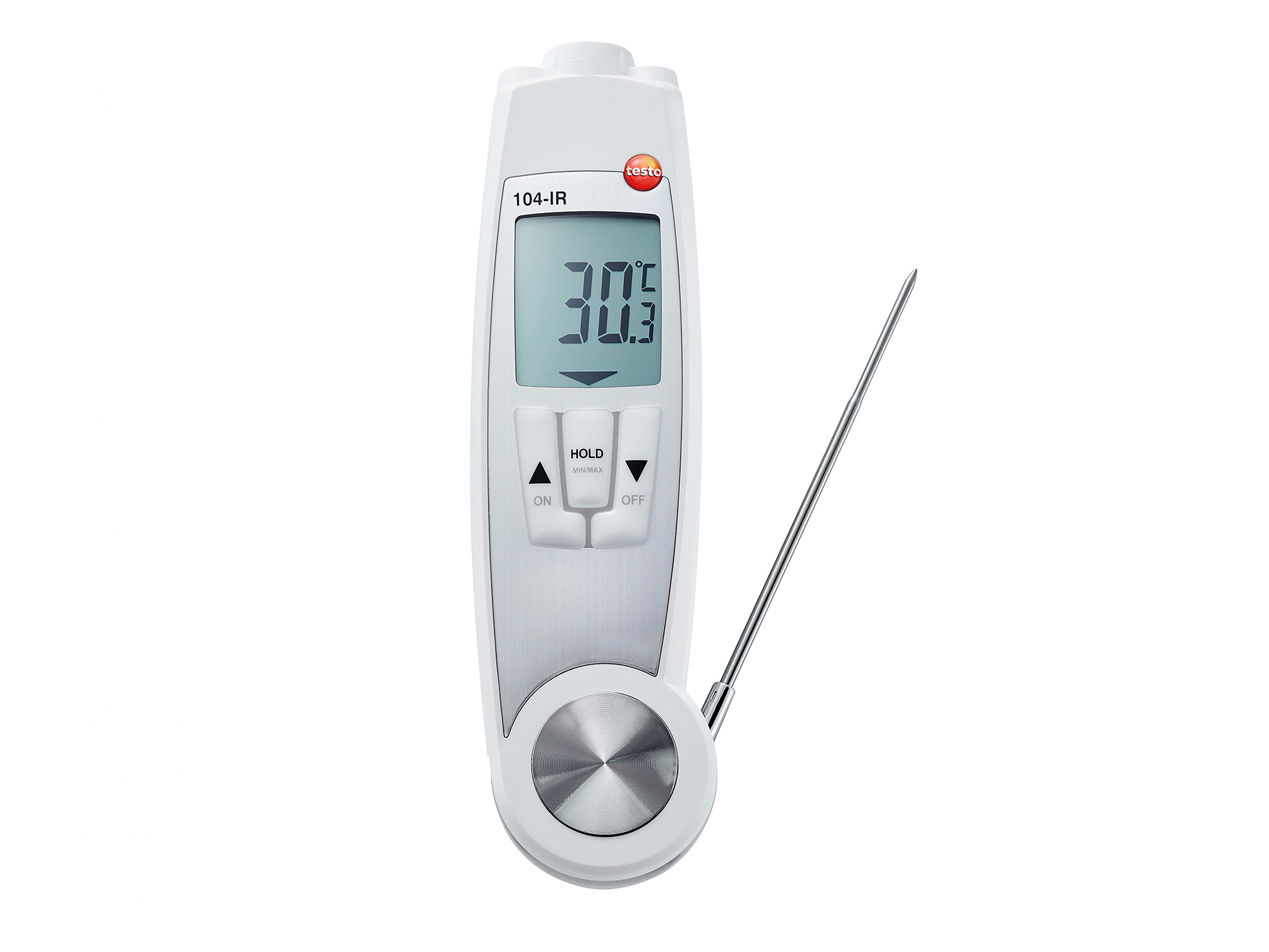
|
Your key benefits
- Safe and efficient processes through reliable and easy-to-use measurement technology
- Immediate certainty whether food can be accepted without hesitation or not
- Noticeable cost reduction through non-intrusive measurement methods
Proven methods & precise technology:
Food safety in storage
When storing food, monitoring environmental conditions is critical to maintaining the cold chain and thus ensuring the basic condition for safe food. The more complex the storage facility, the more mechanisms and processes take effect here. One, for example, is "first in - first out." This basis of warehousing means that fresh goods are stored at the back, while already present goods are brought to the front and used first. This ensures that no goods spoil due to expiry of the sell-by date.
In addition, the targeted and well-considered use of measurement technology is important - data loggers and data monitoring systems in particular have proven themselves here for reliable and complete monitoring of the ambient environmental conditions. But stationary monitoring is also often necessary for refrigerated cabinets and cold rooms. In this way, it is possible to efficiently check that the installed refrigeration units provide the cooling capacity they are supposed to and that they have been planned appropriately for the premises. Because a faulty or inadequately dimensioned refrigeration unit results in unnecessary costs over many years due to avoidable food spoilage.
Measurement technology recommendations for storage
|
All measured values. Anytime and anywhere:
Radio data logger system
testo Saveris 2
|
Specialist for storage facility management:
The testo 174 series
|
- Monitors and documents temperature and humidity automatically and without interruption
- Easily integrated into an existing wireless LAN
- Measurement values are stored in the loggers and in the Testo Cloud
- Access to al
- l measurement data by PC, tablet or smartphone
- Alarms via SMS or e-mail
|
- Monitoring of cold storage and freezer facilities
- Monitoring of temperature and relative humidity in work and storage areas
- Professional software with Excel export function for programming the logger and data analysis
- Temperature measuring range from -30 to +70 °C
|
|
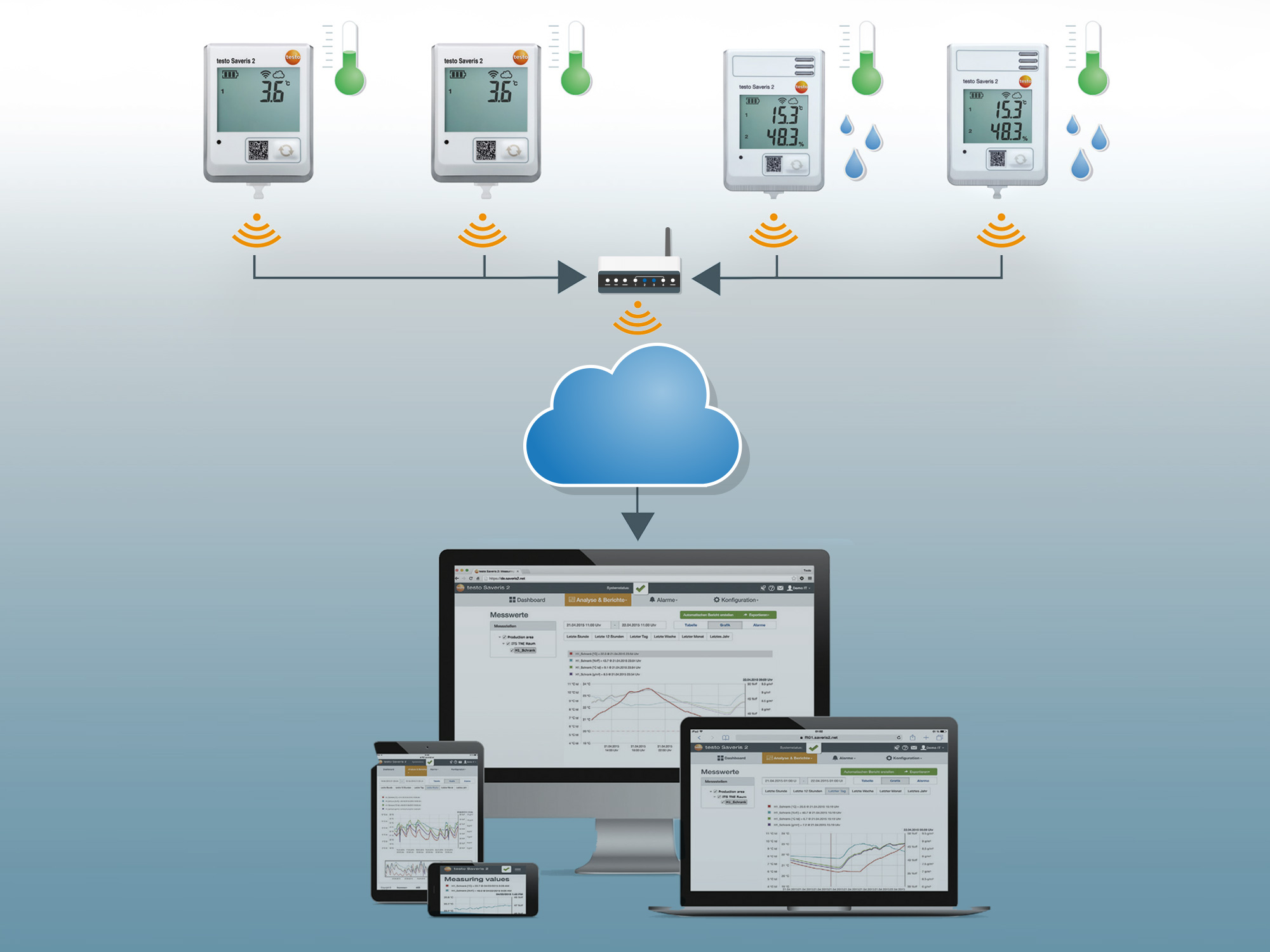
|
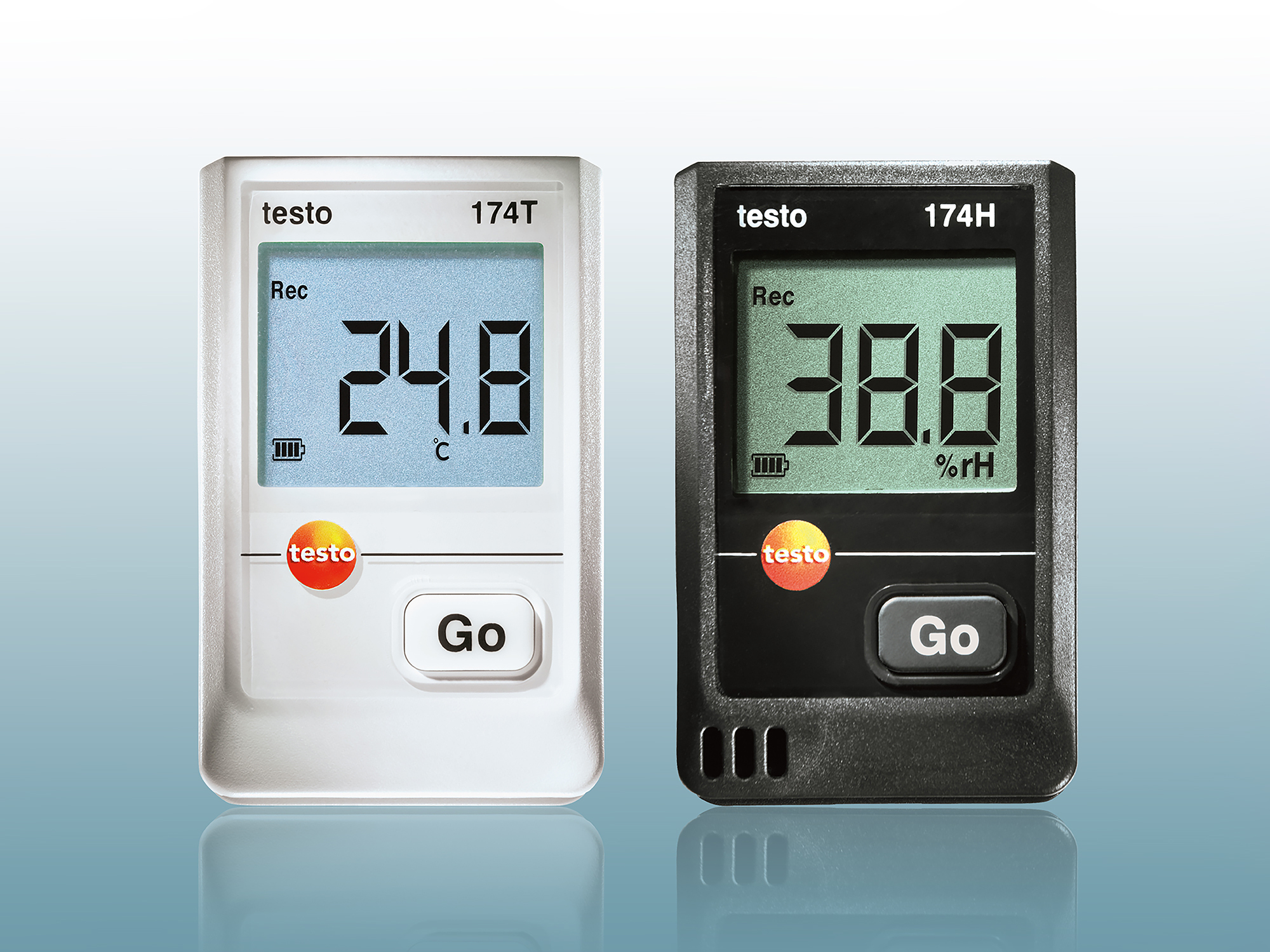
|
Your key benefits
-
Uninterrupted and norm-compliant monitoring of temperature and humidity
-
Alarms in case of limit value violation either directly on the logger or via SMS or e-mail
-
Identification of weak points in storage facilities and equipment
No compromises on the road either:
Food safety during transport
The quality and safety of refrigerated and frozen (and therefore cold chain-mandatory) foods can only be guaranteed if the prescribed temperatures are maintained without interruption: From production to storage, transport, intermediate storage and storage in retail. In concrete terms, this means that the cold chain between the manufacturer and the end consumer must remain uninterrupted, whether in trucks, trains, planes or ships. For this purpose, the so-called deep-freeze regulation defines that means of transport (i.e. refrigerated trucks, refrigerated vehicles or even refrigerated containers) above a certain size must be equipped with a continuous temperature monitoring system. In addition, it is advisable to provide additional certainty through targeted monitoring directly in the freight goods and in the truck by means of highly precise and seamlessly recorded measured values.
Measurement technology recommendations for food transport
|
Reliable monitoring in freight goods:
USB data loggers
testo 184
|
Ready for use for transport monitoring:
Data logger series
testo 174
|
- Monitor temperature, humidity and shock
- Unlimited use thanks to exchangeable battery
- Automatic PDF report without software installation
|
- Monitoring refrigerated transportation
- Compact, reliable and precise
- Professional software with Excel export function for programming the logger and data analysis
- Temperature measuring range from -30 to +70 °C
|
|
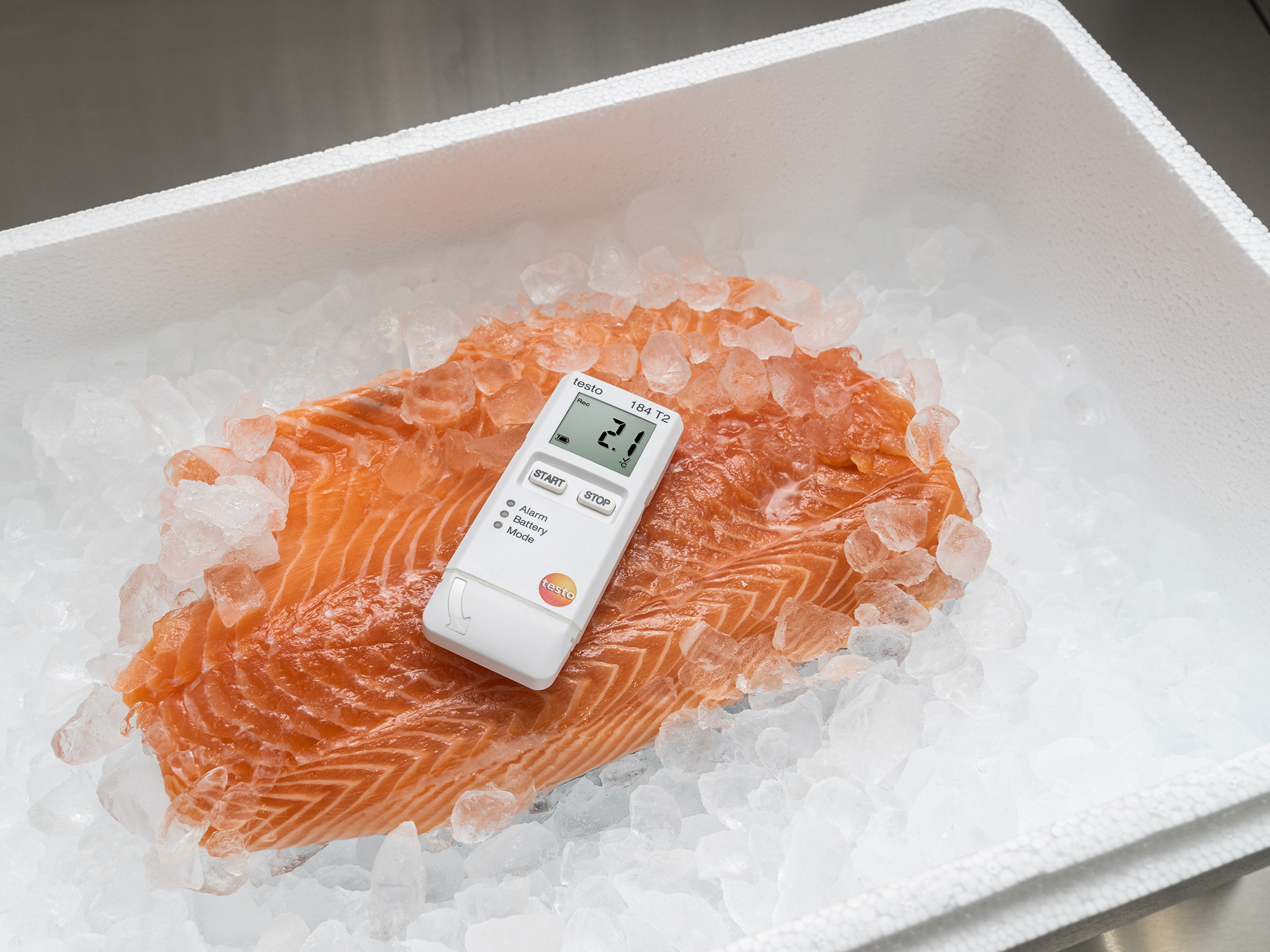
|
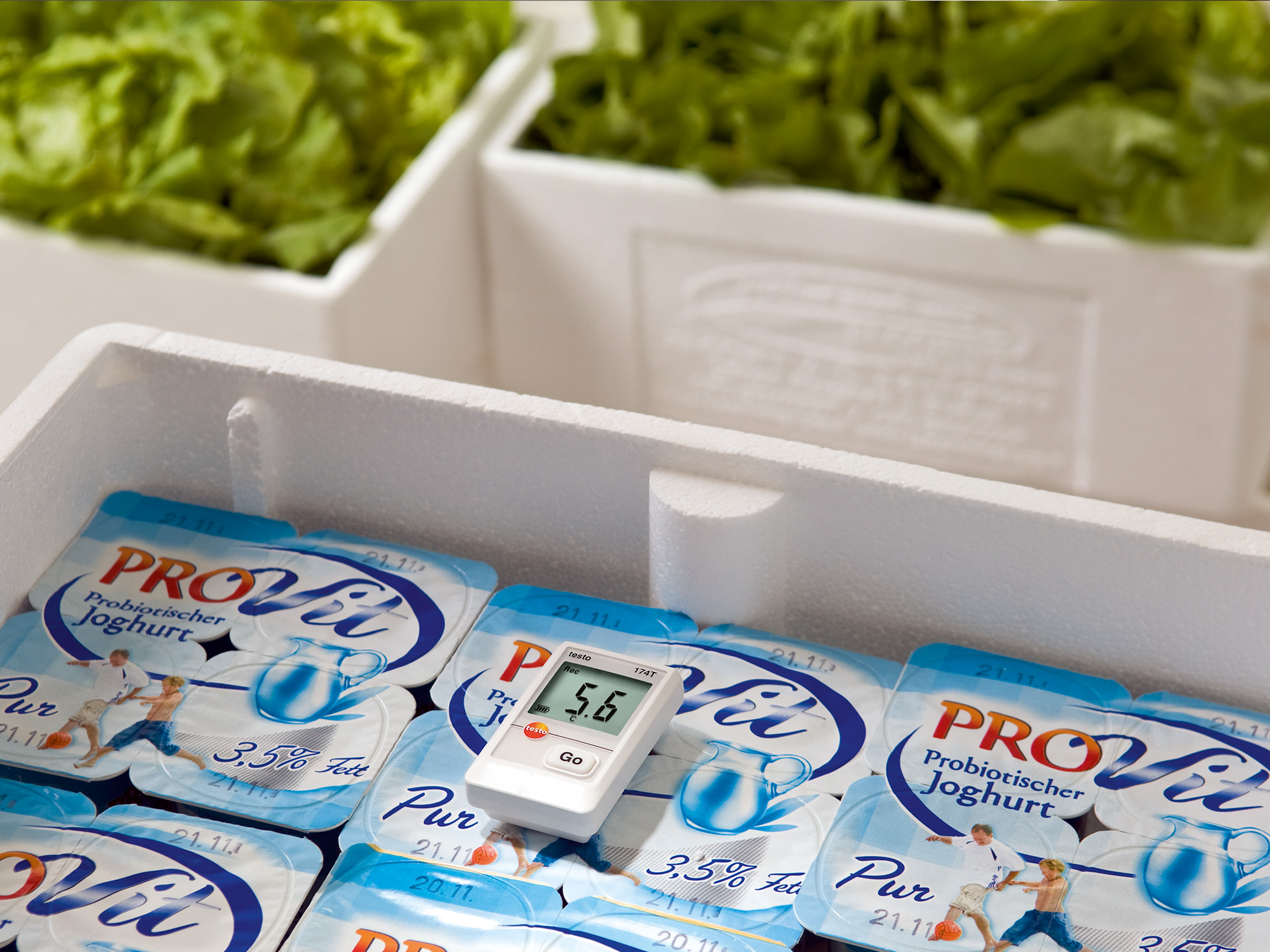
|
Your key benefits
- Certainty that specifications are also adhered to on the road
- Slim and reliable measurement technology that can be installed inconspicuously
- Clear identification of limit violations and problematic deliveries
Certainty at a glance:
The most important temperature limit values for food
Whether core or ambient temperature, compliance with prescribed temperature limits is crucial in the food industry. Violations of limit values put the safety and quality of food at risk.
- Incoming goods: Key limit values for different frozen / chilled products are in the range between ≤ -18 °C (e.g. deep-frozen products) to ≤ +2 °C (e.g. fresh minced meat)
- Storage: Daily checking of the temperature of refrigeration equipment is mandatory. For deep freezers ≤ -18 °C, refrigerators ≤ +6 °C, fresh cold storage ≤ +2 °C
- Food production: Commercial temperature limits (EU) are between ≤ -10 °C (e.g. cold production of ice cream) and ≥ +80 °C (e.g. meat/fish with a cooking time of at least 3 minutes)
- Food service: Commercial temperature limits (EU) are between ≤ -18 °C (e.g. pre-packaged ice cream) and ≥ +65 °C (e.g. meat/fish for serving soon.
